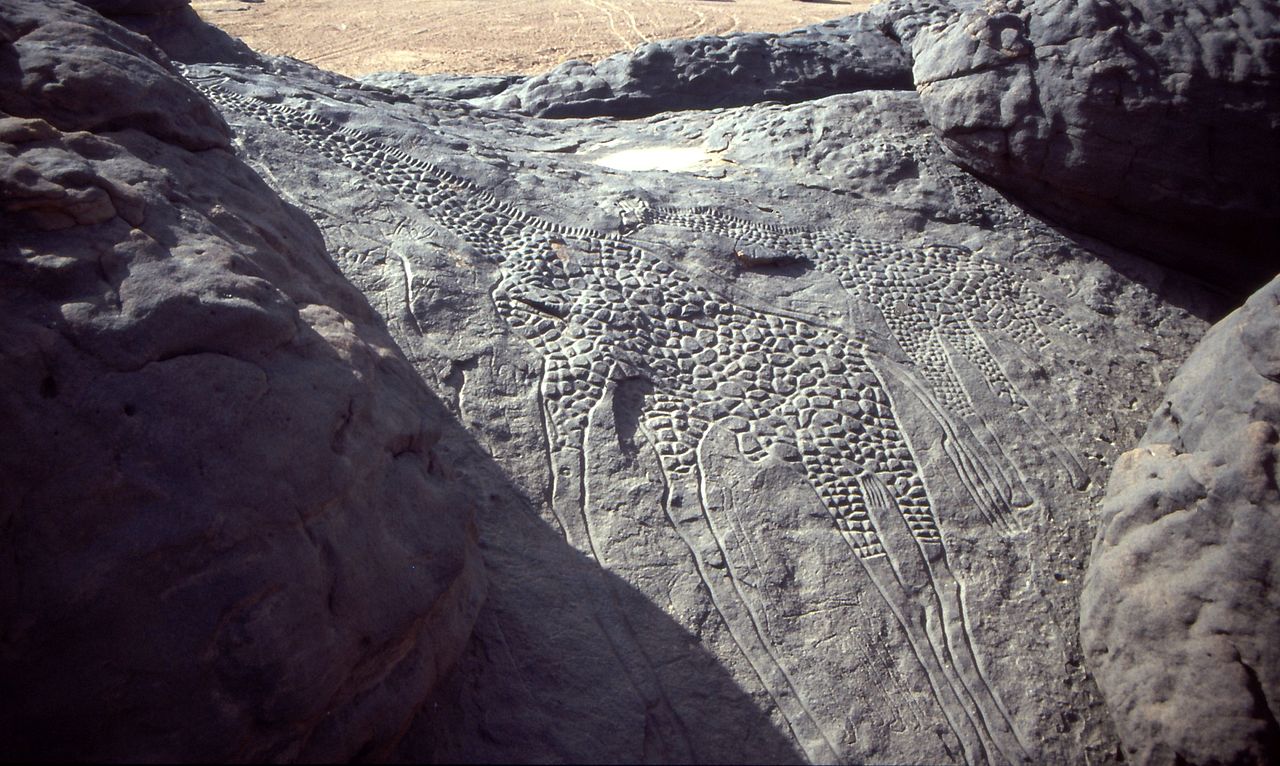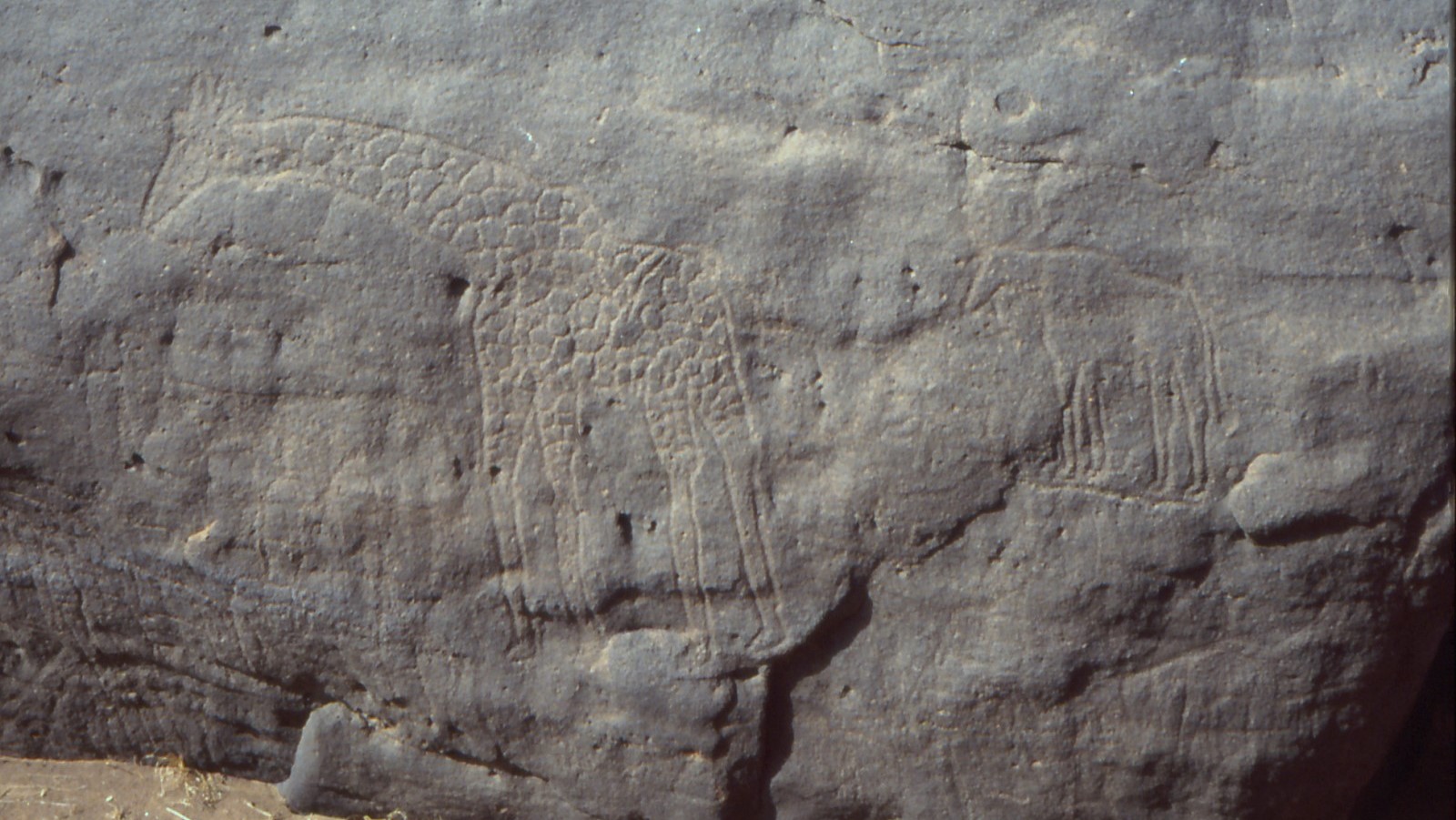Aïr Mountains
The Aïr Mountains or Aïr Massif is a triangular massif, located in northern Niger, within the Sahara Desert.
The Aïr is known for its rock art, dating from 6000 BC to around AD 1000. During the Neolithic Subpluvial the region was a pastoral area, as is illustrated by images of cattle and large mammals. During the 3rd millennium BC, however, a process of desertification began and the Tuareg from further north migrated into the region. Later art indicated war, depicting horses and chariots. In particular, a five-meter-high carving of a giraffe at Dabous discovered in 1999 is internationally famous. Cave art in the region is predominantly stone carving, initially with sharp rock, and from around 1200 BC perhaps with metal.
The Dabous Giraffes are a neolithic petroglyph by an unknown artist. Completed between 9000 BC and 5000 BC, the giraffe carvings were first documented by David Coulson in 1997 while on a photographic expedition at a site in Niger, Africa.
The carving is 20 feet in height and consists of two giraffes carved into the Dabous Rock with a great amount of detail. Dabous Rock is located on the sloping slope of a small rocky outcropping of sandstone in the first foothills of the Air Mountains. One of the giraffes is male, while the other, smaller, is female.
In the surroundings 828 images have been found engraved on the rocks, of which 704 are animals (bovidae, giraffes, ostriches, antelopes, lions, rincerontes and camels), 61 are human and 159 are indeterminate.
This page uses materials from Wikipedia available in the references. It is released under the Creative Commons Attribution-Share-Alike License 3.0.
References
